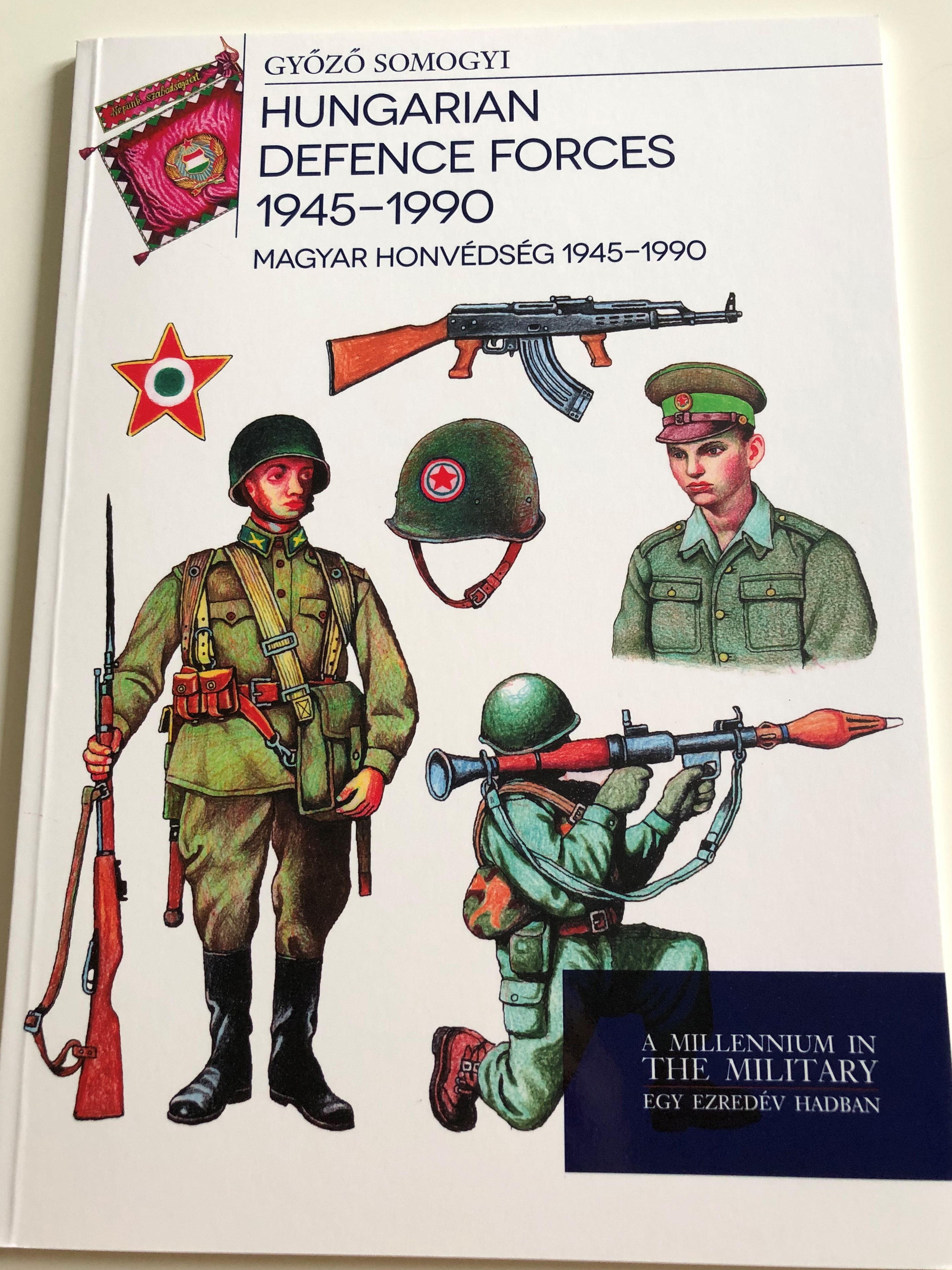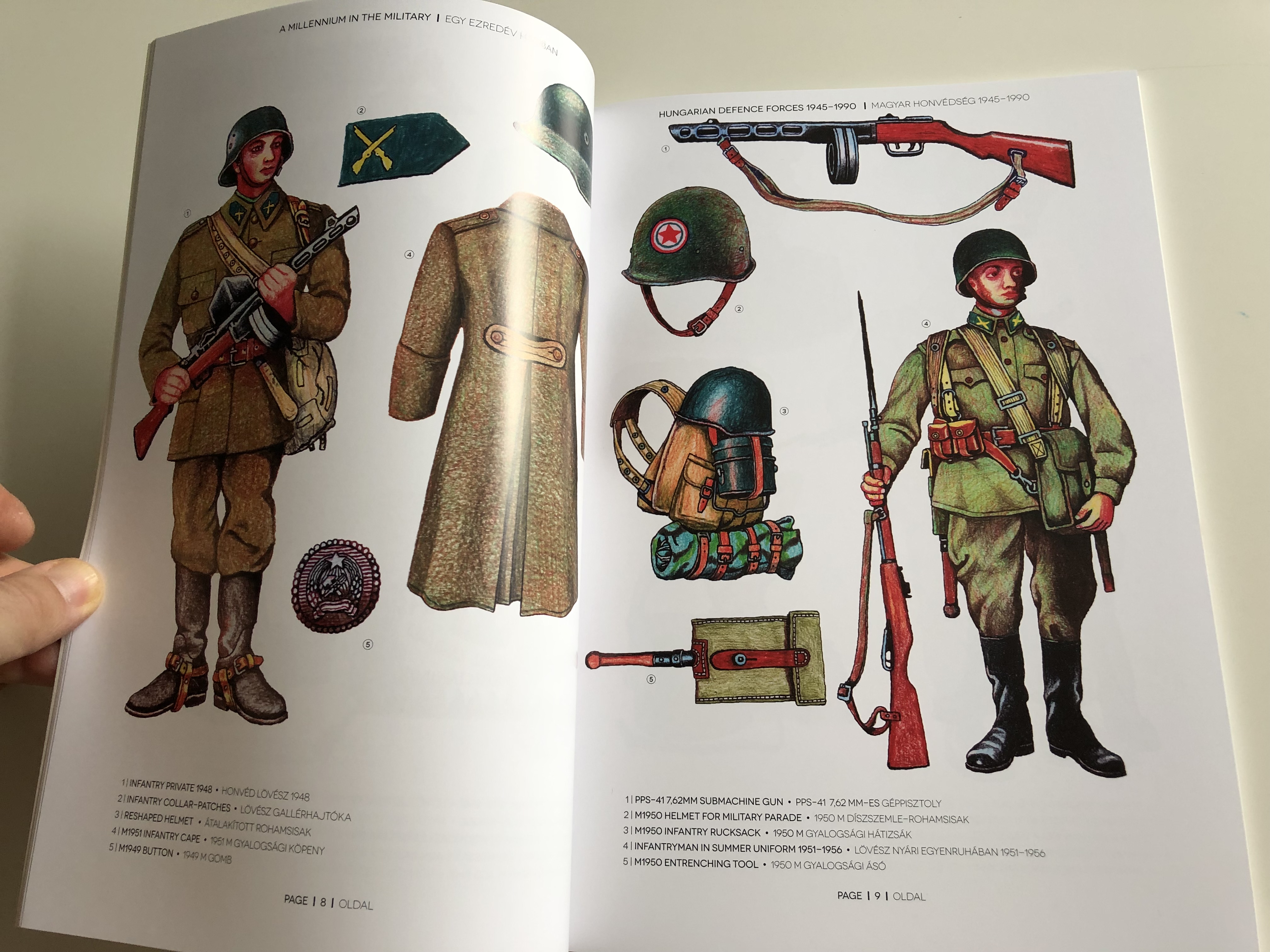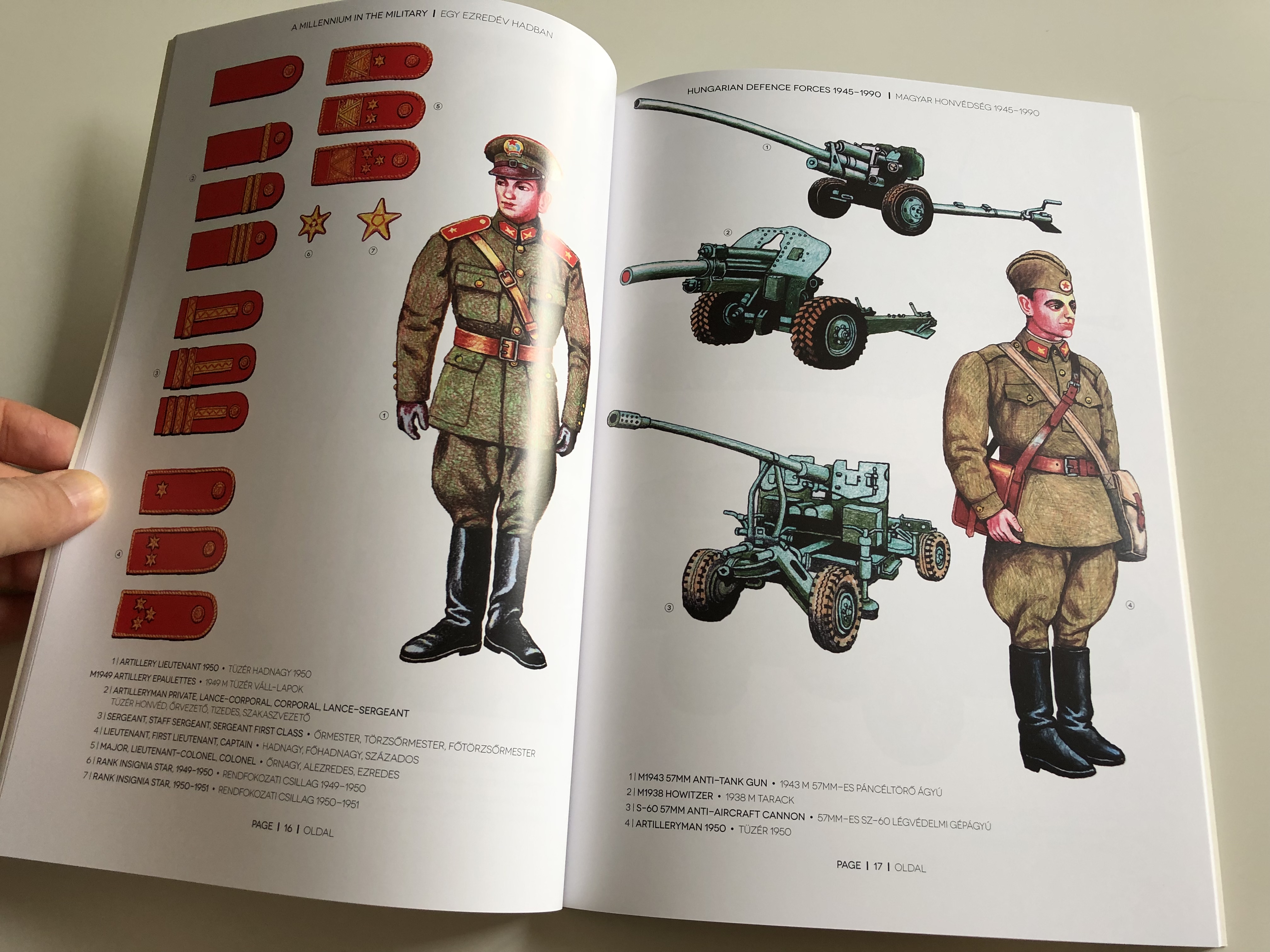Description
Hungarian Defence Forces 1945 - 1990 by Győző Somogyi / Magyar Honvédség 1945-1990 / A Millennium in The Military - Egy Ezredév Hadban / Paperback 2019 / HM Zrínyi
PAPERBACK 2019
ISBN: 9789633276990 / 978-9633276990
ISBN-10: 9633276993
PAGES: 64
PUBLISHER: HM Zrínyi
LANGUAGE: HUNGARIAN - ENGLISH BILINGUAL
About The Author:
Historian and graphic artist Győző Somogyi (1942) has spent decades researching Hungarian military history and painting accurate illustrations. He is an experimental archaeologist and an active hussar re-enactor so he has personally tested many of the clothing and equipment presented in the series. More than a dozen of his full color albums have already been published in Hungarian and German.
Somogyi Győző (1942) történész, grafikus. Több évtizede gyűjti és rajzolja a magyar hadtörténelem tárgyi emlékeit. Mint hagyományőrző huszár a ruhákat, és a fegyvereket a gyakorlatban is kipróbáló kísérleti régészet művelője. Eddig több mint egy tucat színes albuma jelent meg magyar és más nyelven.
English Summary:
During the battles of World War II, the Soviet army occupied Hungary and continued to stay in the country as occupier until 1991. Preparing for a new world war, it Hun-stationed here a force that was far superior to the Hungarian armed forces, and constructed a lot of airfields and So d military Union bases. The enforced a Communist one-party dictatorship on the country, which joined the Soviet-led military alliance, the Warsaw Pact in 1955. The Hungarian military was disbanded in 1945, its old officers and NCOs were cast aside or forced to leave the country. The new armed forces were established with proletarian-born officer corps from crash courses and WWII Soviet armaments. Their soldiers received Russian uniforms alien to Hungarian traditions. This army was intended to serve as an auxiliary force of the Soviet military, first in a war to be waged against Yugoslavia and then in a global war. By 1953, its manpower was expanded to 218,224, and was significantly reduced after the death of Stalin. The 1956 Revolution found the armed forces in the process of downsizing. Some of its soldiers joined the freedom fight against the overwhelming Soviet forces, while most of them remained neutral or left the army. The people's army of the Communist dictatorship - which continued after the suppressed revolution - reduced the Russian character of the uniforms. From 1960, the army - based on general compulsory service and meeting the standards of the age - implemented continuous upgrades in armament and uniforms. By the 1980s, it had officers graduated from Soviet military academies and experience in international peacekeeping. The Soviet occupation and the strict Soviet control, as well as the auxiliary-force character of the Hungarian armed forces remained until 1991.
Hungarian Summary:
Magyarországot a II. világháború harcai során elfoglalta a szovjet hadsereg és megszállóként az országban maradt 1991-ig.
Egy új világháborúra készülve a magyar haderőt többszörösen felülmúló erőt állomásoztatott itt, repülőterek és támaszpontok sokaságát építette fel.
A Szovjetunió egy kommunista egypárti diktatúrát kényszerített az országra, amely 1955-ben a szovjet vezetésű katonai szövetséghez, a Varsói Szerződéshez csatlakozott.
A magyar hadsereget 1945-ben leszerelték, régi tisztjeit, tiszthelyetteseit félreállították vagy kiüldözték az országból. Egy új haderőt állítottak fel, a hadsereget gyors tanfolyamokon
kiképzett proletár származású tisztikarral és II. világháborús szovjet fegyverzettel látták el. A katonák a magyar hagyományoktól idegen orosz egyenruhát kaptak. Ezt a haderőt a szovjet hadsereg segédcsapatának szánták először egy Jugoszlávia elleni, majd egy világméretű háborúban.
Létszámát 1953-ra 218 224 főre növelték, majd Sztálin halála után jelentősen csökkentették. Leépítés közben érte a hadsereget az 1956-os forradalom.
A szovjet túlerő ellen vívott szabadságharchoz a katonák egy része csatlakozott, többsége passzív maradt vagy leszerelt.
A levert forradalom után folytatódó kommunista diktatúra néphadserege csökkentette az egyenruha orosz jellegét. 1960-tól folyamatos fegyverzeti és egyenruhareformok jellemzik az általános sorkötelezettségen alapuló, a kor színvonalán álló haderőt. A hadsereg az 1980-as évekre nagy létszámú, szovjet akadémiákon végzett tisztikarral és nemzetközi béketeremtő tapasztalatokkal rendelkezett. A szovjet megszállás és a szigorú szovjet irányítás, a hadsereg segédcsapat jellege a korszak végéig, 1991-ig fennmaradt.

























































